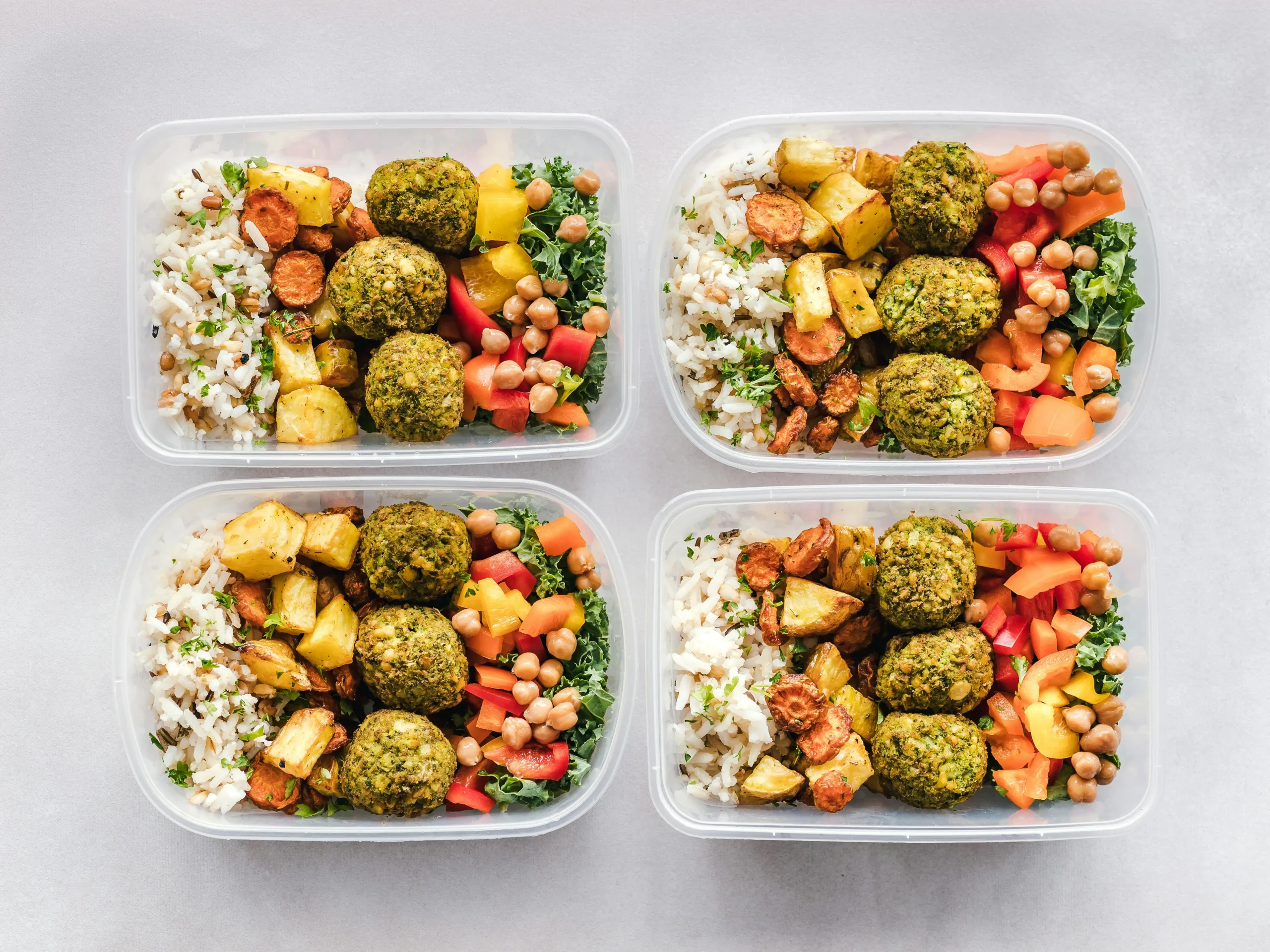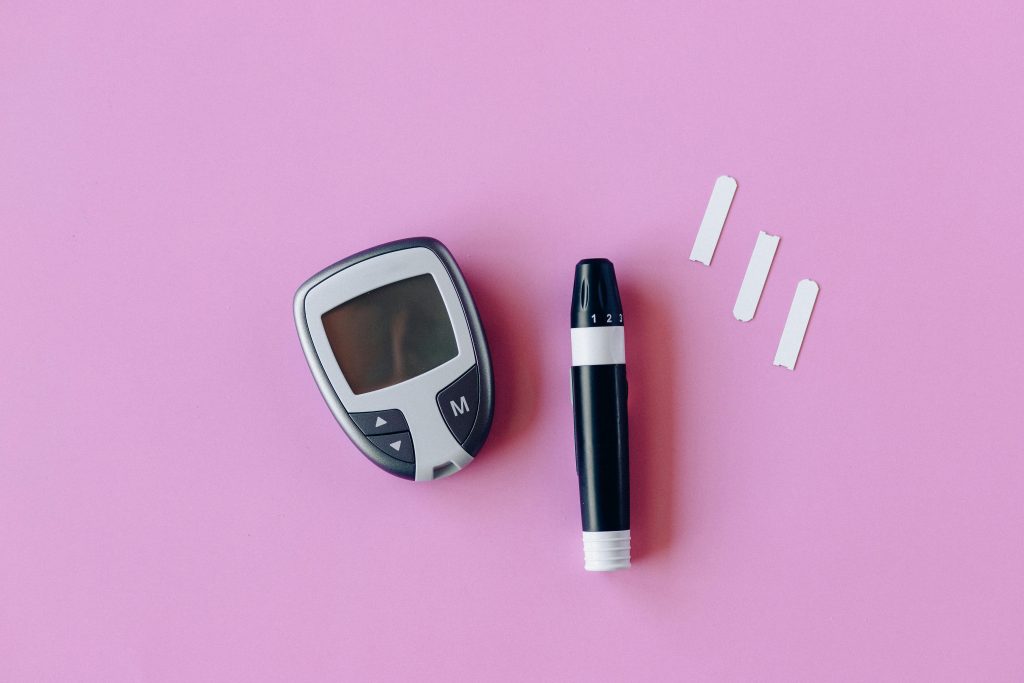Table Of Contents
-
Key Highlights
-
How to Build a Diabetic Meal Plan for the Week
-
Portion Control and Plate Method for Diabetes
-
Grocery Shopping List for Weekly Diabetic Prep
- Batch Cooking, Leftovers & Time-Saving Tips
-
Sample 7-Day Diabetes Meal Prep Menu (with Recipes)
-
Budget-Friendly Diabetes Meal Planning Tips
-
Interactive Meal Planning Calculator
-
Frequently Asked Questions
-
Conclusion
- References and Additional Resources
Key Highlights
- Weekly meal prep aligns with ADA/CDC guidelines and simplifies blood sugar management through consistent, balanced nutrition
- Meal prepping saves time, money, and makes portion control easier for diabetics while reducing daily decision fatigue
- The Plate Method and carb counting are visually simple, effective strategies for weekly diabetic meal planning
- Including variety of non-starchy vegetables, lean proteins, whole grains, and healthy fats is essential for balanced diabetes nutrition
- Batch cooking and smart shopping reduce daily stress and help prevent blood sugar swings from poor food choices
- Flexibility matters—enjoy favorite foods in moderation with no need for extreme dietary restrictions
- Regular review with a registered dietitian or diabetes educator enhances ongoing meal planning success
How to Build a Diabetic Meal Plan for the Week
Building an effective weekly meal plan for diabetics starts with understanding the core principles recommended by the American Diabetes Association and CDC. The foundation of successful diabetes meal planning revolves around balancing carbohydrates, proteins, and healthy fats while maintaining consistent meal timing.
Understanding Your Carbohydrate Goals
Most adults with diabetes should aim for 45-60 grams of carbohydrates per meal for women and 60-75 grams for men, though your healthcare provider may recommend different targets based on your individual needs. When planning your diabetic meal prep recipes, focus on complex carbohydrates like brown rice, quinoa, and sweet potatoes rather than refined options.
The Power of Consistent Meal Timing
Eating at regular intervals helps maintain stable blood sugar levels throughout the day. Plan your main meals 4-6 hours apart, with healthy snacks as needed. This consistency makes batch cooking for diabetics particularly effective, as you can prepare portions that align with your daily schedule.
Cultural Preferences and Individualization
Your ADA diabetes diet should reflect your cultural background and food preferences. Whether you enjoy Mediterranean, Asian, Mexican, or traditional American cuisine, you can adapt any cultural food pattern to meet diabetic guidelines. Focus on traditional cooking methods like grilling, steaming, and roasting while moderating portion sizes of starchy foods.
Portion Control and Plate Method for Diabetes
The Plate Method is the cornerstone of effective portion control for diabetics and makes meal planning visually simple. This evidence-based approach, endorsed by both the CDC and ADA, eliminates the need for complex calculations while ensuring balanced meals for diabetes.
Your 9-Inch Plate Template
Using a standard 9-inch dinner plate, fill half with non-starchy vegetables like leafy greens, broccoli, peppers, and tomatoes. One-quarter should contain lean protein such as chicken breast, fish, tofu, or beans. The remaining quarter is for starchy foods like brown rice, quinoa, or sweet potato. Add a small serving of healthy fat like avocado or nuts.
Visual Cues for Portion Sizes
Master these simple portion guides for your diabetic meal planner:
- Protein portion: Size of a deck of cards (3 oz)
- Starchy vegetables: Size of a computer mouse (1/2 cup)
- Healthy fats: Size of your thumb (1 tablespoon)
- Non-starchy vegetables: Fill your hands cupped together (1 cup)
Weekly Plate Method Implementation
When doing your weekly type 2 diabetes meal prep, prepare components separately so you can mix and match throughout the week. Batch-cook proteins, roast various vegetables, and prepare whole grains in bulk. This approach gives you flexibility while maintaining proper portions for blood sugar control.
Grocery Shopping List for Weekly Diabetic Prep
Smart shopping is crucial for successful diabetic meal prep. Your diabetic grocery list should prioritize nutrient-dense, blood sugar-friendly foods that support your weekly meal planning goals while keeping costs manageable.
Non-Starchy Vegetables (Buy Fresh and Frozen)
- Leafy greens (spinach, kale, lettuce)
- Cruciferous vegetables (broccoli, cauliflower, Brussels sprouts)
- Bell peppers and zucchini
- Tomatoes and cucumbers
- Frozen vegetable blends (without sauce)
- Green beans and asparagus
Smart Starchy Choices
For your healthy recipes for diabetes, choose these complex carbohydrates:
- Brown rice and wild rice
- Quinoa and barley
- Oats (steel-cut or rolled)
- Sweet potatoes
- Whole grain bread (3+ grams fiber per slice)
Budget-Friendly Shopping Tips
Creating affordable diabetic meals starts with strategic shopping:
- Buy proteins in bulk when on sale and freeze portions
- Choose frozen vegetables over fresh when they’re more cost-effective
- Purchase generic brands for pantry staples
- Shop seasonal produce for better prices and variety
- Use dried beans and lentils as inexpensive protein sources
Essential Proteins for Your Shopping List
Fresh Proteins:
- Skinless chicken breast and thighs
- Fish (salmon, cod, tilapia)
- Lean ground turkey (93% lean)
- Eggs and egg whites
Plant-Based Options:
- Dried beans and lentils
- Tofu and tempeh
- Greek yogurt (plain, unsweetened)
- Cottage cheese (low-fat)
Batch Cooking, Leftovers & Time-Saving Tips
Effective batch cooking for diabetics is the secret to maintaining consistent blood sugar control while saving time and reducing daily stress. This systematic approach to meal preparation transforms your relationship with food and diabetes management.
Sunday Meal Prep Strategy
Dedicate 2-3 hours on Sunday for your weekly diabetic meal prep session:
- Start with proteins: Bake chicken breasts, grill fish, or prepare a large batch of beans
- Roast vegetables: Prepare 2-3 varieties of non-starchy vegetables
- Cook grains: Make brown rice, quinoa, or other whole grains in bulk
- Prep snacks: Portion nuts, cut vegetables, and prepare grab-and-go options
Mix-and-Match Meal System
Create flexibility in your make-ahead diabetic lunches and dinners by preparing components separately. This allows you to combine different proteins, vegetables, and grains throughout the week, preventing boredom while maintaining portion control.
Example combinations:
- Grilled chicken + roasted broccoli + brown rice
- Baked salmon + steamed green beans + quinoa
- Turkey meatballs + zucchini noodles + small portion of whole grain pasta
Freezer-Friendly Options
Extend your meal prep efficiency with freezer-friendly diabetic meal prep recipes:
- Portion cooked proteins in freezer bags (thaw overnight in refrigerator)
- Prepare and freeze vegetable-rich soups and stews
- Make breakfast egg muffins with vegetables (freeze individually)
- Prepare smoothie packs with portioned fruits and vegetables
Time-Saving Tips for Busy Schedules
For those with irregular schedules or shift work, adapt your diabetes-friendly meal prep approach:
- Use a slow cooker or pressure cooker for hands-off cooking
- Prep ingredients immediately after grocery shopping
- Keep emergency meals frozen for unexpected schedule changes
- Prepare overnight oats for quick, blood sugar-friendly breakfasts
Sample 7-Day Diabetes Meal Prep Menu (with Recipes)
This sample 7-day diabetic meal prep plan demonstrates how to implement the plate method and carb counting for diabetics in real-world meal planning. Each day includes approximately 45-60 grams of carbohydrates per meal, with flexibility for individual needs.
| Day | Breakfast | Lunch | Dinner | Snack |
|---|---|---|---|---|
| Monday | Greek yogurt parfait with berries (15g carbs) | Grilled chicken salad with quinoa (30g carbs) | Baked salmon with roasted vegetables (25g carbs) | Apple slices with almond butter (15g carbs) |
| Tuesday | Vegetable omelet with whole grain toast (20g carbs) | Lentil soup with side salad (35g carbs) | Turkey meatballs with zucchini noodles (20g carbs) | Greek yogurt with nuts (10g carbs) |
| Wednesday | Overnight oats with chia seeds (25g carbs) | Tuna salad lettuce wraps with sweet potato (30g carbs) | Grilled chicken with brown rice and broccoli (35g carbs) | Cottage cheese with cucumber (5g carbs) |
| Thursday | Scrambled eggs with spinach and toast (18g carbs) | Bean and vegetable soup (28g carbs) | Baked cod with quinoa and green beans (32g carbs) | Mixed nuts and berries (12g carbs) |
| Friday | Greek yogurt smoothie with spinach (20g carbs) | Chicken and vegetable stir-fry with brown rice (35g carbs) | Lean pork with roasted root vegetables (30g carbs) | Celery with peanut butter (8g carbs) |
| Saturday | Whole grain cereal with milk and fruit (30g carbs) | Turkey and avocado wrap (32g carbs) | Grilled fish with wild rice and asparagus (28g carbs) | Cheese and whole grain crackers (15g carbs) |
| Sunday | Weekend pancakes (whole grain) with sugar-free syrup (25g carbs) | Leftover prep combination meal (30g carbs) | Slow cooker chicken with vegetables (25g carbs) Yogurt with cinnamon (12g carbs) | Yogurt with cinnamon (12g carbs) |
Sample Recipe: Mediterranean Chicken Bowl
Ingredients (serves 4):
- 1 lb boneless, skinless chicken breast
- 2 cups cooked quinoa (1 cup dry)
- 4 cups mixed greens
- 1 cup cherry tomatoes, halved
- 1 cucumber, diced
- 1/4 cup feta cheese, crumbled
- 2 tbsp olive oil
- 1 lemon, juiced
- 1 tsp dried oregano
Prep Instructions:
- Season chicken with oregano, salt, and pepper. Grill for 6-7 minutes per side.
- Cook quinoa according to package directions and let cool.
- Whisk olive oil, lemon juice, and seasonings for dressing.
- Divide into 4 containers: quinoa, sliced chicken, vegetables, and feta.
- Store dressing separately and add before eating.
Nutrition per serving: 28g carbohydrates, 32g protein, 8g healthy fat
Budget-Friendly Diabetes Meal Planning Tips
Creating affordable diabetic meals doesn’t mean compromising on nutrition or taste. With strategic planning and smart substitutions, you can maintain excellent blood sugar control diet while keeping grocery costs manageable.
Protein on a Budget
Protein is often the most expensive component of diabetic meal prep recipes, but these strategies help stretch your dollar:
- Eggs: One of the most cost-effective complete proteins at about $0.20 per egg
- Dried beans and lentils: Provide protein and fiber for under $1 per cup cooked
- Canned tuna and salmon: Buy in bulk when on sale, excellent for quick meal prep
- Chicken thighs: Often half the price of breast meat with more flavor
- Ground turkey: Choose 93% lean when on sale and freeze in portions
Maximize Frozen and Canned Options
Frozen and canned foods can be nutritional powerhouses for budget-friendly meals for type 2 diabetes:
- Frozen vegetables: Often more nutritious than fresh, last longer, no waste
- Canned tomatoes: Perfect base for soups, stews, and sauces
- Frozen fish: Individual portions prevent waste and save money
- Canned beans: Rinse to reduce sodium, instant protein and fiber
Seasonal Shopping Strategy
Align your diabetic meal planner with seasonal produce cycles:
- Winter: Focus on root vegetables, citrus fruits, and hearty greens
- Spring: Take advantage of fresh asparagus, peas, and leafy greens
- Summer: Enjoy abundant zucchini, tomatoes, peppers, and berries
- Fall: Stock up on squash, apples, and Brussels sprouts
Stretch Ingredients Across Multiple Meals
Make your diabetic grocery list work harder with these techniques:
- Buy a whole chicken and use for multiple meals (roast, soup, salad)
- Prepare a large batch of chili or soup for 4-5 meals
- Use vegetable scraps for homemade broth
- Repurpose leftover proteins in salads, omelets, and wraps
Interactive Meal Planning Calculator
Use this interactive tool to calculate your personalized daily carbohydrate and calorie needs for effective diabetic meal prep.
Personal Meal Planning Calculator
Enter your information to get personalized recommendations:
Frequently Asked Questions
The best approach to diabetic meal prep combines the plate method with batch cooking. Start by preparing proteins, non-starchy vegetables, and whole grains separately, then mix and match throughout the week. Focus on consistent meal timing, proper portions (using the 9-inch plate method), and include all food groups. Always consult with your healthcare provider or registered dietitian to personalize your meal planning approach based on your specific needs and blood sugar targets.
Creating budget-friendly meals for type 2 diabetes starts with smart shopping. Focus on affordable proteins like eggs, dried beans, and chicken thighs. Use frozen vegetables, which are often cheaper and just as nutritious as fresh. Buy generic brands for pantry staples, shop seasonal produce, and prepare large batches of soups, stews, and chili that can provide multiple meals. A typical week of diabetic meals can cost $40-60 per person with careful planning.
Most adults with diabetes should aim for 45-60 grams of carbohydrates per meal for women and 60-75 grams for men, though individual needs vary. Your healthcare provider may recommend different targets based on your medication, activity level, and blood sugar goals. When doing carb counting for diabetics, focus on complex carbohydrates and always pair them with protein and healthy fats to help manage blood sugar spikes.
Excellent make-ahead diabetic snacks include portioned nuts (1 oz servings), hard-boiled eggs, cut vegetables with hummus, Greek yogurt with berries, and cheese with whole grain crackers. Keep portions consistent—aim for 15-20 grams of carbohydrates per snack if needed between meals. Prepare these in individual containers or bags to maintain proper portion control and make grab-and-go options convenient.
Absolutely! Diabetic meal prep is beneficial for Type 1 diabetes as it helps with consistent carb counting for diabetics and meal timing coordination with insulin doses. Prepare meals with known carbohydrate counts and maintain consistent meal schedules when possible. Always work closely with your endocrinologist or certified diabetes educator to adjust insulin doses based on your meal prep routine and any changes in eating patterns.
Prevent meal prep boredom by rotating your diabetic meal prep recipes every 2-3 weeks, experimenting with different spices and seasonings, and trying new cooking methods. Prepare components separately so you can create different combinations throughout the week. Include international flavors—Mediterranean, Asian, Mexican—all can be adapted for diabetes-friendly meals. Keep a list of successful combinations and gradually expand your repertoire.
For accurate carb counting for diabetics in batch meals, measure ingredients before combining and calculate total carbohydrates using nutrition labels or apps like MyFitnessPal. Divide the total by the number of servings to get per-portion carb counts. Label containers with carb content and serving sizes. Use portion control containers or a food scale to ensure consistent serving sizes throughout the week.
A complete diabetic grocery list includes: lean proteins (chicken, fish, eggs, beans), non-starchy vegetables (leafy greens, broccoli, peppers), whole grains (brown rice, quinoa, oats), healthy fats (avocado, nuts, olive oil), and low-fat dairy (Greek yogurt, cottage cheese). Shop the perimeter of the store first, choose frozen vegetables without sauces, and read labels to avoid added sugars in packaged foods.
Yes, all fruits can be included in diabetes-friendly meal prep when consumed in appropriate portions. Choose whole fruits over juices, and aim for 15 grams of carbohydrates per serving (about 1 small apple, 1/2 banana, or 3/4 cup berries). Berries are particularly good choices due to their lower carb content and high fiber. Include fruits as part of balanced meals or snacks, paired with protein or healthy fats.
When eating out, apply portion control for diabetics principles: fill half your plate with vegetables, choose grilled over fried options, ask for dressings and sauces on the side, and consider taking half your meal home. For travel, pack diabetes-friendly snacks like nuts, string cheese, and whole fruit. Research restaurant menus ahead of time, and don’t be afraid to make special requests to accommodate your blood sugar control diet needs.
Conclusion
Successful diabetic meal prep transforms diabetes management from a daily struggle into a sustainable lifestyle choice. By implementing the strategies outlined in this guide—from mastering the plate method to smart batch cooking—you’re equipped to maintain stable blood sugar levels while enjoying delicious, varied meals that fit your budget and schedule.
Remember that effective diabetes meal planning is highly individual. Start with these evidence-based frameworks, but don’t hesitate to adapt them to your cultural preferences, work schedule, and taste preferences. The key is consistency in timing, portions, and balanced nutrition rather than perfection in execution.
Your journey with diabetic meal prep will evolve as you discover what works best for your lifestyle and blood sugar patterns. Begin with just one or two strategies from this guide, build confidence, then gradually expand your meal prep repertoire. Consider working with a registered dietitian or certified diabetes educator to personalize these recommendations for your specific needs.
Take action today by planning your first week of diabetic meal prep. Your future self—and your blood sugar levels—will thank you for investing in this powerful tool for diabetes management.
References and Additional Resources
- CDC Diabetes Meal Planning Guidelines – Comprehensive evidence-based foundation for meal plan structure, plate method, and portion sizing recommendations.
- NIDDK Healthy Living with Diabetes – National Institute of Health recommendations for healthy living, physical activity integration, and meal planning strategies for diabetes management.
- MedlinePlus Diabetes Type 2 Meal Planning – Practical “how-to” meal planning information focusing on carbohydrate management, weekly planning strategies, and shopping tips.
- Endotext Dietary Management of Diabetes – In-depth analysis of 2024 ADA guidelines for diabetic nutrition, including macronutrient proportions and evidence-based dietary approaches.
- CDC Tasty Recipes for People with Diabetes – Downloadable collection of diabetes-friendly recipes, batch cooking examples, and visual portion guides.
- CDC Budget-Friendly Diabetes Eating Tips – Strategies for maintaining healthy diabetes nutrition while managing food costs and maximizing meal prep efficiency.
- American Diabetes Association Food Hub – Comprehensive resource for diabetes-friendly recipes, meal planning tools, and nutritional guidance from certified diabetes educators.
- Michigan State University Diabetes Meal Planning Research – Evidence-based approach to incorporating personal food preferences while maintaining blood sugar control through effective meal planning.
Professional Resources
For personalized guidance, consider consulting with:
- Registered Dietitian Nutritionist (RDN) with diabetes specialization
- Certified Diabetes Care and Education Specialist (CDCES)
- Endocrinologist for medication coordination with meal planning
Find local professionals through the Academy of Nutrition and Dietetics or Certification Board for Diabetes Care and Education.
Disclaimer:
The information provided on MD-Pilot is for educational and informational purposes only. It is not intended as a substitute for professional medical advice, diagnosis, or treatment. Always seek the advice of your physician or other qualified healthcare provider with any questions you may have regarding a medical condition. Never disregard professional medical advice or delay in seeking it because of something you have read on this website.
Recomended Articles
View AllWeekly Health Intel
Get evidence-based health tips, latest research, and exclusive guides delivered weekly




